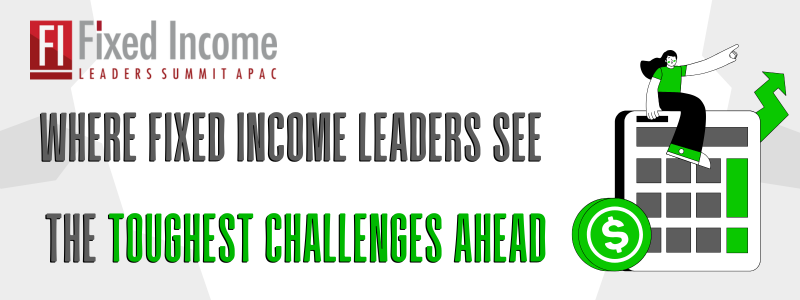Where Fixed Income Leaders See the Toughest Challenges Ahead

The fixed income market faces a pivotal moment. From heightened geopolitical risks to rapid digital transformation, buy-side leaders are rethinking how to build resilience, generate returns, and integrate new priorities into their portfolios. Ahead of Fixed Income Leaders Summit (FILS) APAC, here are the five biggest challenges shaping conversations in 2025.
1. Macro & Geopolitical Pressures Global markets are under strain as geopolitical tensions rise.
The U.S.–China trade war has escalated, with tariffs climbing to 145% vs. 125%, curbing trade flows and economic growth.
Investors are also re-evaluating the role of U.S. Treasuries as a risk-free asset, as yields rise and prices fall amid volatility. At the same time, central banks are diverging in their rate policies, with some holding steady and others adjusting in response to inflation and trade dynamics.
2. Portfolio Dynamics & Market Structure
Portfolio construction is becoming more defensive yet more nuanced. Diversification, yield, and duration strategies dominate, while emerging markets are increasingly attractive — India’s corporate bond market, for example, grew 9% in the last year.
Fixed income ETFs are playing a bigger role too, providing liquidity and accessibility in turbulent conditions and giving investors tactical flexibility.
3. Technology in Fixed Income
Technology is reshaping fixed income at speed. AI is now central to research, credit screening, and risk analysis, delivering productivity gains and sharper insights.
Blockchain and tokenisation are starting to change issuance and settlement, with 24/7 bond trading and settlement on the horizon. Meanwhile, data-driven sentiment analysis is becoming a critical tool for gauging sovereign bond markets.
4. Private Credit & Alternatives
Private credit has exploded to $1.5 trillion and is projected to hit $2.6 trillion by 2029, reflecting investor demand for higher yields and diversification.
Yet concerns are emerging. Returns on U.S. loans are declining, and forecasts suggest average returns on equity could fall from 6.7% to 5.2%. At the same time, alternatives such as transition and green bonds are gaining ground as investors explore new instruments alongside traditional fixed income.
5. ESG & Sustainability
ESG integration in fixed income is accelerating, with over 80% of investors using ESG ratings in some form. But debate continues over their relevance — particularly in sovereign vs. corporate debt.
Green bonds are slowly gaining traction in Asia, with landmark deals like Nepal’s $60 million issuance setting the stage. Yet adoption lags behind Nordic and European models, leaving open questions about how sustainability can scale without compromising creditworthiness.
Conclusion
From geopolitics and portfolio resilience to private credit and ESG, the fixed income landscape is shifting fast. These five challenges will define the year ahead — and they’re the same issues buy-side leaders will debate at Fixed Income Leaders' Summit APAC this November 4.